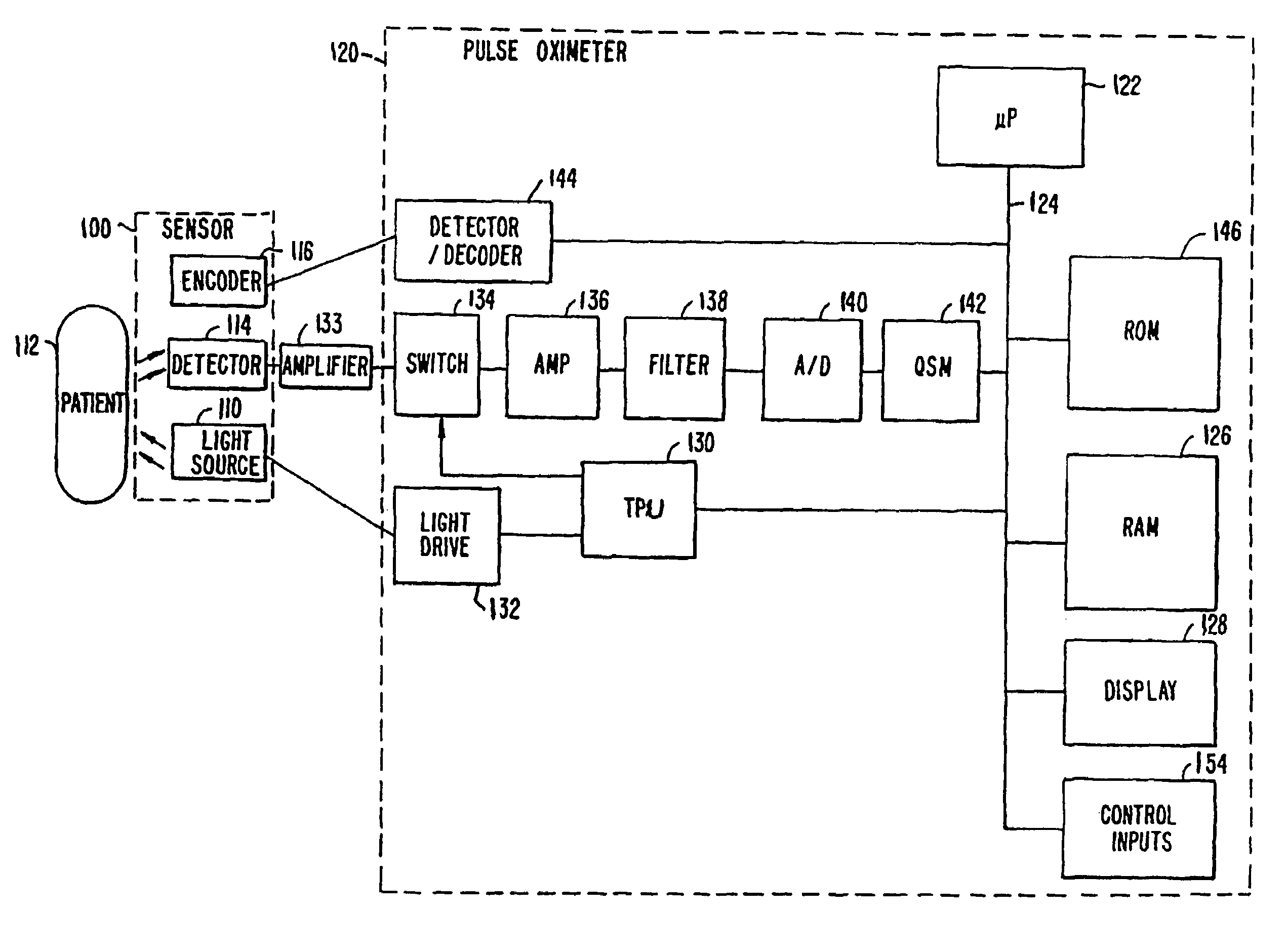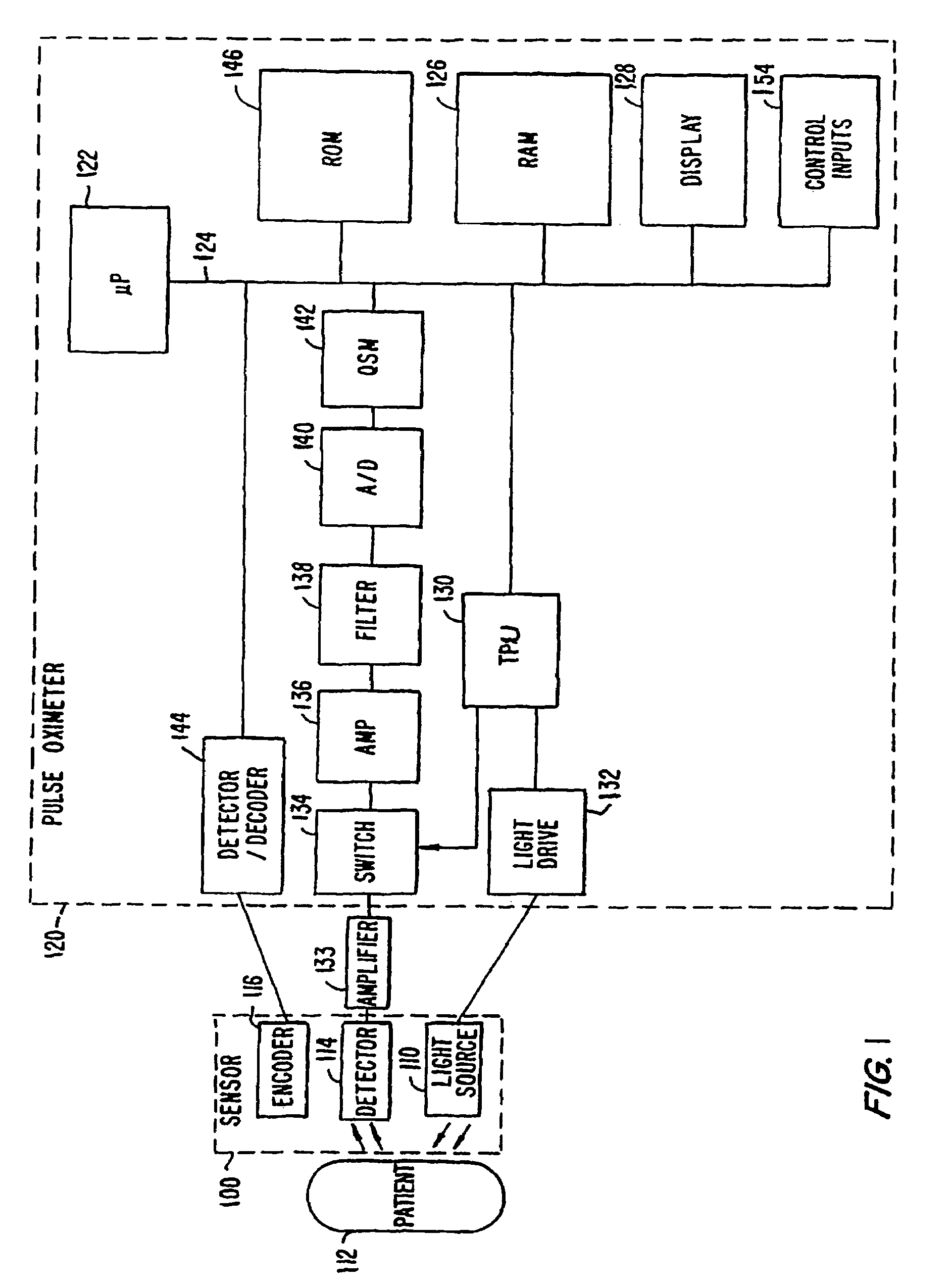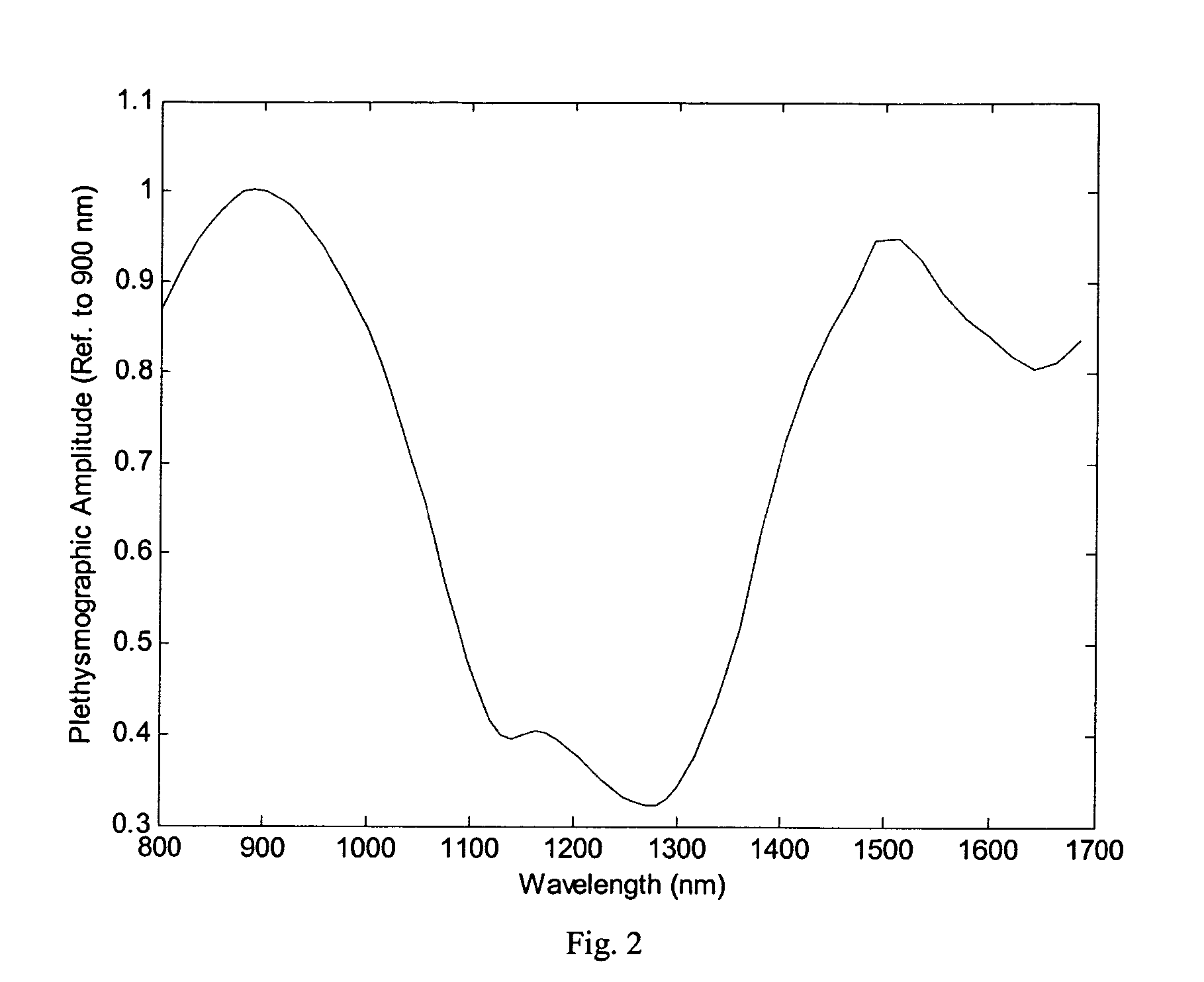Pulse oximetry motion artifact rejection using near infrared absorption by water
a technology of motion artifact and pulse oximetry, which is applied in the field of processing signals obtained from medical diagnostic equipment, can solve the problems of inaccurate estimation of oxygen saturation by pulse oximetry, electromagnetic coupling from other electronic instruments, and motion of the patient also introduces noise and affects the signal
- Summary
- Abstract
- Description
- Claims
- Application Information
AI Technical Summary
Benefits of technology
Problems solved by technology
Method used
Image
Examples
Embodiment Construction
[0021]By measuring the artifact signal, the present invention allows motion artifact to be separated from the plethysmographic signal without the limiting assumptions of prior known techniques. The present invention provides methods for measuring the motion signal associated with changes in tissue optical properties and using the measurement to compensate plethysmographic measurements made at other wavelengths.
[0022]FIG. 1 is a block diagram of an exemplary pulse oximeter that may be configured to implement the embodiments of the present invention. The embodiments of the present invention can be a data processing algorithm that is executed by the microprocessor 122, described below. Light from light source 110 passes into patient tissue 112, and is scattered and detected by photodetector 114. A sensor 100 containing the light source and photodetector may also contain an encoder 116 which provides signals indicative of the wavelength of light source 110 to allow the oximeter to selec...
PUM
 Login to View More
Login to View More Abstract
Description
Claims
Application Information
 Login to View More
Login to View More - R&D
- Intellectual Property
- Life Sciences
- Materials
- Tech Scout
- Unparalleled Data Quality
- Higher Quality Content
- 60% Fewer Hallucinations
Browse by: Latest US Patents, China's latest patents, Technical Efficacy Thesaurus, Application Domain, Technology Topic, Popular Technical Reports.
© 2025 PatSnap. All rights reserved.Legal|Privacy policy|Modern Slavery Act Transparency Statement|Sitemap|About US| Contact US: help@patsnap.com



